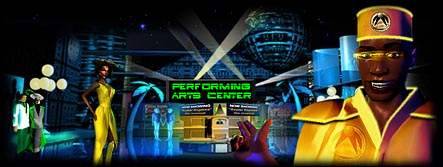
Larry Hogan, and congressman Dutch Ruppersberger, respectively.)

(That’s from Mike Janke, co-founder of DataTribe, Gov. ” Baltimore is positioned to be the cyber and innovation capital of our nation” and the jobs announcement “helps solidify Baltimore and Maryland’s reputation as the cybersecurity capital of the world.” Try on some of these claims for size: “Maryland is home to the world’s most advanced cybersecurity and data science. That’s a bit what it sounded like recently, when, two weeks before election day, local, state, and national elected officials from both parties joined economic development officials and company officials to announce “Cybertown, USA.” In essence, a cybersecurity firm and venture-capital companies that invest in tech startups are setting up shop in Port Covington, the massive mixed-use mini-city on a large waterfront tract in South Baltimore that’s the brainchild of Under Armour founder Kevin Plank.

One of the most successful worlds has been Second Life.A politician’s best bet days before an election? Make sweeping job-creation claims at a corporate gold-shovel show. Since my days at the Palace, a variety of other avatar worlds have come and, in some cases, gone. No doubt, many of the observations here still hold true for many Palace sites, and for cyberpsychology in general. These articles therefore serve as a window into, and a psychological record of, the early days at Palace. Since leaving the community, I expanded my research to other cyberpsychology topics, while Palace evolved in its own new directions. In fact, my career as a cyberpsychologist began in this Palace study, with my very first article focusing on the members' "addiction" to Palace life. This "Life at the Palace" is a subsection of my online hypertext book The Psychology of Cyberspace. What follows is an outline of my research. At that time, this was a new dimension to social interaction on the Internet, and certainly a predictor of the online multimedia experiences that have appeared since Mansion first opened. What makes the Palace environment so fascinating is its highly visual and spatial qualities. My research at Mansion consisted of an intensive case study of the psychological and social dynamics of this new online community. My social science research at the Palace began in 1995, shortly after the opening of the first and original Palace site known as Main Mansion, or simply "Main" or "Mansion." It consisted of approximately 30 rooms - including a bar, a game room, bedrooms, a study, a beach, a moor, and several surrealistic locales, such as the orbit of an alien planet and an underground space that looks like Hades. Users talk with each other via typed text that appears in balloons that pop out from the avatar's head, similar to characters in comic strips. These icons, called "avatars" or "props" can be changed at will. A unique feature of Palace is the ability to create icons to represent oneself.

Users can move freely within and between the rooms.

Some even may be considered "art."Īny given Palace site consists of various interlinked rooms. Currently, there are many Palace sites located across the Internet, varying widely in technical and artistic sophistication as well as graphical themes (e.g., a futuristic Cybertown, a haunted house, Japan, Star Trek, etc.). Palace is a much more open-ended environment with no specific purpose other than socializing and, for many users, experimenting with one's online identity. It is an excellent example of the trend toward graphical, interactive domains on the Internet, sometimes referred to as "habitats," "GMUKS" (Graphical Multi-user Konversation), or, "multimedia chat." More recent programs usually involve a game of some kind, including specific rules, social roles, and objectives. The Palace is one of the original client/server programs that creates a highly visual, spatial, and auditory chat environment.


 0 kommentar(er)
0 kommentar(er)
